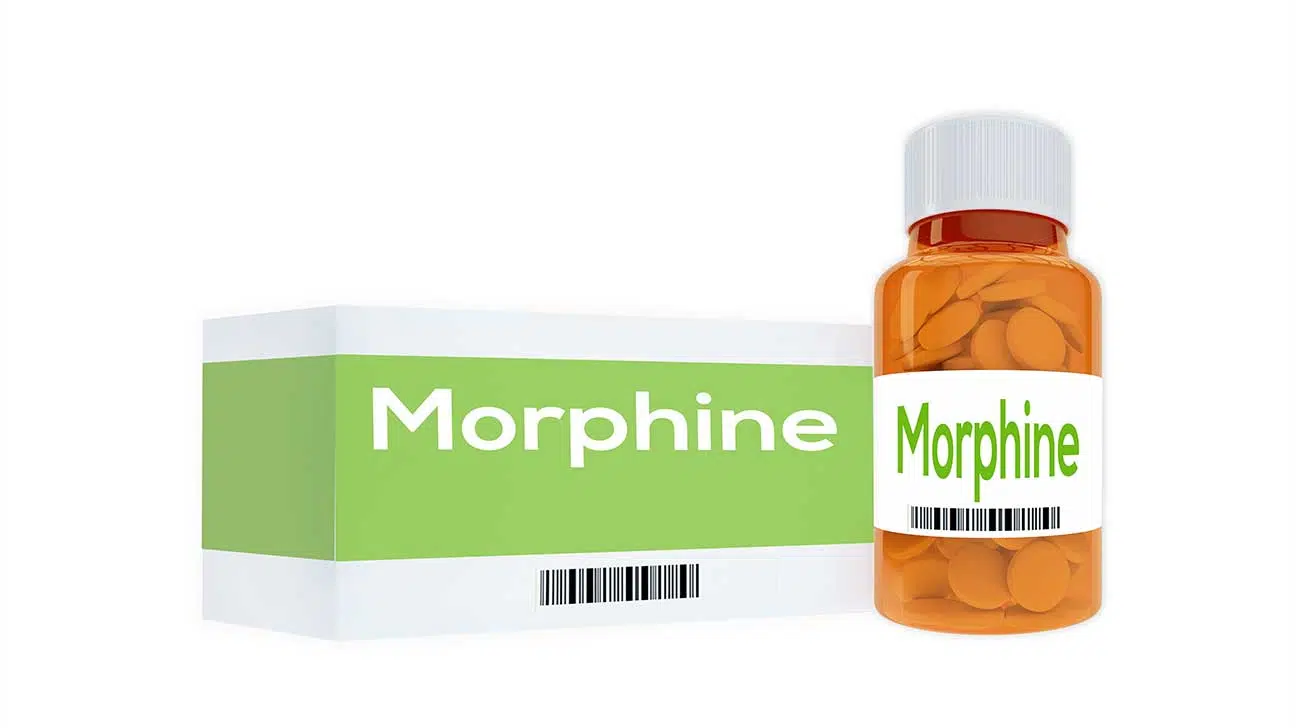
Morphine is an opioid analgesic with similar pharmacology to oxycodone, codeine, and fentanyl.
More than one week of morphine administration comes with a relatively high risk of building a tolerance to opioids.
Due to the similarities with other opioids, morphine tolerance may result in cross-tolerance. Cross-tolerance occurs when your body becomes less susceptible to the effects of other opiates.
How Morphine Tolerance Develops
Morphine tolerance develops as a result of your brain learning to anticipate the changes brought on by the drug.
As your neurons struggle to maintain a normal balance, these changes will reduce the effect of your painkillers. That is called tolerance.
Morphine Exposure And Antinociceptive Tolerance
Morphine tolerance usually begins after one week of taking 60 mg or more of oral morphine per day.
This is generally enough chronic morphine exposure to cause the neurochemical modulations associated with the development of morphine tolerance.
One of the effects of morphine tolerance is a partial loss of the drug’s antinociceptive effects.
That means that your normal dose of morphine is no longer able to act as a total pain inhibitor when it binds with your opioid receptors.
Chronic Pain
Chronic pain and cancer pain are always a risk factor for opioid tolerance due to the necessity of long-term painkiller use.
In order to prevent dependence and possible addiction, you should maintain an open dialog with your healthcare team.
Always let your doctor know if your normal dose is losing efficacy.
Neuropathic Pain
Neuropathic pain results from damage to the nerves themselves. The nature of this condition makes it challenging to treat, and treatment will depend on the underlying cause.
In the meantime, you will need some type of pain medication with analgesic effects to block pain messages from reaching your brain through the spinal cord.
One of the effects of neuropathic pain is hyperalgesia, which is a high sensitivity to pain.
Unfortunately, the same neural changes that cause hyperalgesia also appear to be linked to an increased risk of morphine tolerance.
How Morphine Tolerance Affects Addiction Risk
Morphine tolerance does not have to be dangerous if you keep communicating with your doctor.
A change in your treatment may be all that is needed, but cross-tolerance can complicate treatment as well as addiction risk.
If you have already developed a tolerance to morphine, you may also experience signs of tolerance when using other opioids.
This will extend to illicit drugs, including illegal opioid prescriptions and heroin.
People who are already tolerant to opioids are more likely to develop a serious morphine addiction that could be life-threatening.
Side Effects Of Morphine Tolerance
Morphine tolerance occurs as a result of your brain trying to adapt to a “new” environment. These adaptations result in a variety of changes to the behavior of your central nervous system.
Hyperalgesia
Research suggests that morphine tolerance and hyperalgesia are closely related, because they share the same neural affiliations.
If you develop hyperalgesia as a result of morphine tolerance, your pain threshold will drop dramatically.
Analgesic Tolerance
Morphine is an opioid analgesic. It works by binding with your opioid receptors and physically blocking pain signals from reaching your brain.
When you develop morphine tolerance, the full analgesic effect of morphine will begin to fail.
While you may be tempted to increase your dose to attenuate your pain, it is important to find a better long-term solution with the help of your physician.
Treatments For Morphine Tolerance
By discussing your growing tolerance with your doctor, you will open the door for treatments that can reduce your tolerance and help manage your pain.
Aspartate Therapy
Aspartate therapy exploits the N-methyl-d-aspartate receptor. This receptor is able to reduce tolerance and increase the pain inhibition effect of opioids.
Recent studies in neuropharmacology are working to flesh out this approach using tolerant rats as animal models.
Many of these trials appear promising, as they affect the μ-opioid receptor.
The co-administration of NMDA receptor antagonists and nitric oxide are proving effective in reducing morphine tolerance and increasing morphine analgesia.
Desensitization
Extended dosing and desensitization have also proven promising. By studying mRNA receptors, researchers have been able to observe the gene expression of the mu-opioid receptor.
This allowed them to observe the effects of different methods of downregulation and upregulation on synaptic responses.
What they found was that morphine tolerance isn’t linear. It can be reduced with extended dosing and proper treatment.
Addiction Treatment Services For Opioid Abuse
Opioid abuse is a serious health risk. Whether you’re misusing prescription drugs or using illegal drugs, it is important to find professional help as soon as possible.
Fortunately, there are many options available for every stage of your treatment.
Harm Reduction Programs
Harm reduction programs provide kits that allow you to use drugs as safely as possible. Depending on what you use, these kits may include clean needles, naloxone, and other options.
Medically Assisted Detox
Medically assisted detox occurs under the supervision of a qualified healthcare team. They will provide medication as needed to reduce withdrawal symptoms.
For opioid addiction, methadone is commonly used to taper you off stronger opiates.
Inpatient and Outpatient Treatment
Drug addiction treatment requires physical and mental healing particularly because morphine addiction over-excites the microglia.
Under the influence of morphine, these naturally occurring astrocytes can dispose of healthy brain cells as well as damaged ones. Brain damage is a common side effect.
Inpatient and outpatient programs are designed to offer a variety of therapeutic options to heal you physically and mentally as needed.
Aftercare
For many people, drug addiction is a lifelong battle. Aftercare programs play an important role in providing assistance for as long as you need after your initial recovery.
Find A Drug Rehab Facility Today
Don’t wait for your morphine addiction to give way to an illicit drug addiction, which can become dangerous.
Find an addiction recovery program today by reaching out to our free helpline today.
Addiction Resource aims to provide only the most current, accurate information in regards to addiction and addiction treatment, which means we only reference the most credible sources available.
These include peer-reviewed journals, government entities and academic institutions, and leaders in addiction healthcare and advocacy. Learn more about how we safeguard our content by viewing our editorial policy.
- National Library of Medicine — Cellular mechanisms of neuropathic pain, morphine tolerance, and their interactions
https://www.ncbi.nlm.nih.gov/pmc/articles/PMC33610/ - National Library of Medicine — Opioid Tolerance Development: A Pharmacokinetic/Pharmacodynamic Perspective
https://www.ncbi.nlm.nih.gov/pmc/articles/PMC2628209/#:~:text=Cross%2Dtolerance%20is%20the%20principle,by%20long%2Dterm%20heroin%20exposure. - National Library of Medicine: PubMed — Drugs used in the treatment of opioid tolerance and physical dependence
https://pubmed.ncbi.nlm.nih.gov/15124977/#:~:text=Drugs%20blocking%20these%20mechanisms%20are,tolerance%20development%20during%20opioid%20treatment. - U.S. National Library of Medicine: MedlinePlus — Morphine
https://medlineplus.gov/druginfo/meds/a682133.html - Proceedings of the National Academy of Sciences — Stabilization of Morphine Tolerance with Long Term Dosing
https://www.pnas.org/doi/10.1073/pnas.1419183112


